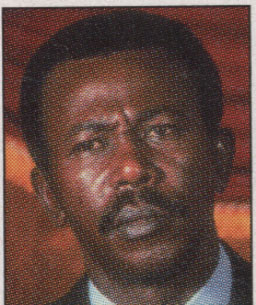
Mengistu Haile Mariam, Party Leader, Chief of Staff and President of the People's Democratic Republic of Ethiopia 1977-91 |
Mark YOUR calender. Our Calender |

Mengistu Haile Mariam, Party Leader, Chief of Staff and President of the People's Democratic Republic of Ethiopia 1977-91 |
Mark YOUR calender. Our Calender |
Long Live DERG !!
It gets more interesting
Read on the Endless Stories
I am going to have couple of links in here. See if you can drop by and give them a
visit. Tell 'em I send you....a little humor wouldn't hurt!
Ethiopian at ACG
Oromo wonderland OromoSoft
I can't believe there is such a thing ? what next oromo flag and land ?
Books for Kids and some of you Dumb adults at Get Educated
Proud to be an Ethiopian ? See all my friends at Professors
Here is a collection of Ethiopian Music at BATI Music
That should be enough for now.